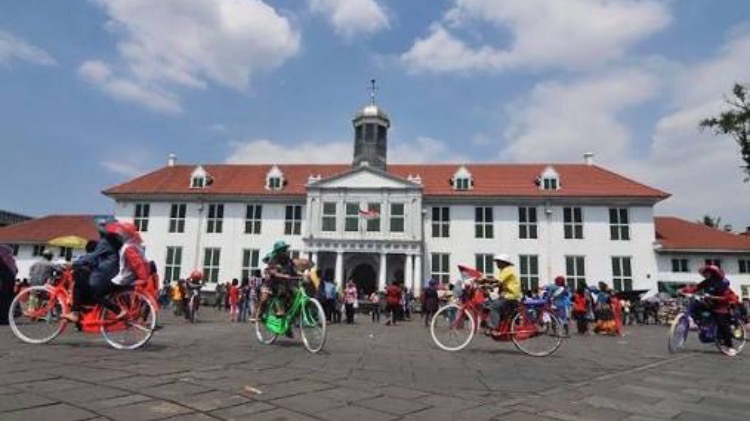Several students from each level went to the Wayang Museum, Fatahillah Museum and Bank Indonesia Museum on Friday, 20 January 2017. In the Wayang Museum, they had the opportunity to see different types of shadow puppets from all around Indonesia and learn about what stories they represent. There are 3 types of Javanese wayang: wayang golek (made out of wood from West Java), wayang kulit (made out of skin, usually from Central & East Java) and wayang orang that is played by humans in wayang-like costumes (usually in cabaret shows popular in Yogyakarta). Besides Indonesian puppets, there are also a collection of international puppets, for example the pauper string puppet from US and Chinese wooden puppets. The museum building was once a church and tomb of Netherland governors who governed Batavia. Fatahillah Museum was once the office building for the Netherland governors. Then it was used as supplies center by the Japanese. The building was officially opened as a museum by Ali Sadikin, who was Jakarta’s governor in 1974. Inside, there are artifacts from 1800s and a huge painting that depicts the struggle of Indonesians fighting the Netherland army. Under the building, there are dungeons where the Dutch threw most of the Indonesian war heroes such as Pangeran (Prince) Diponegoro. In Bank Indonesia Museum, the students learnt about Indonesian currency, the history behind it and how its value changed overtime. Inside the museum, there were huge walls that describes how Indonesian economy had grown. There is also an exhibition of old currency. Indonesians previously used real gold and silver as currency. Because Indonesia was a huge trading partner for spices, hence Bank Indonesia museum had also collected old currencies from all over the world.
“Kota Tua is a piece of history in the middle of Jakarta. It is important to learn what happened before to allow us to develop a better Jakarta. During my visit to museum bank Indonesia, I learned that the rupiah had inflated more than 600% and in 4 years, our government had decreased that inflation until 14%. These techniques that the government used back then are a learning experience for the younger generation who will eventually be the leaders of Indonesia. My visit to the Wayang Museum felt as if I was going back in time and viewing the olden days. This is Indonesia’s heritage that we should hold dear. I learnt that tradition is very important. We need to be proud of being Indonesian and own up our traditions. In the museum, I saw how diverse our country is and I felt that Indonesia truly is the gem on the equator. Fatahillah Museum amplified my love for my country. Seeing how our heroes struggled for our independence was inspiring and we really need to bring justice to what they have done by being a true patriot. How? As a student, study well and when we are done studying we should contribute to our country. We should not take the independence given to us for granted.
The trip was so much fun. I learned a lot about Jakarta and I also enjoyed learning all of these outside of class with my friends. Overall, the trip had been informative and for us JC2 students, it was a day for us to release stress.” Gaby JC2 Cromwell
Click to rate this post!
[Total: 0 Average: 0]

More Stories
Good Friday AY 24-25
OPENING A NEW CHAPTER— STUDENT COUNCIL AY 25-26
STEAM WEEK AY 24-25